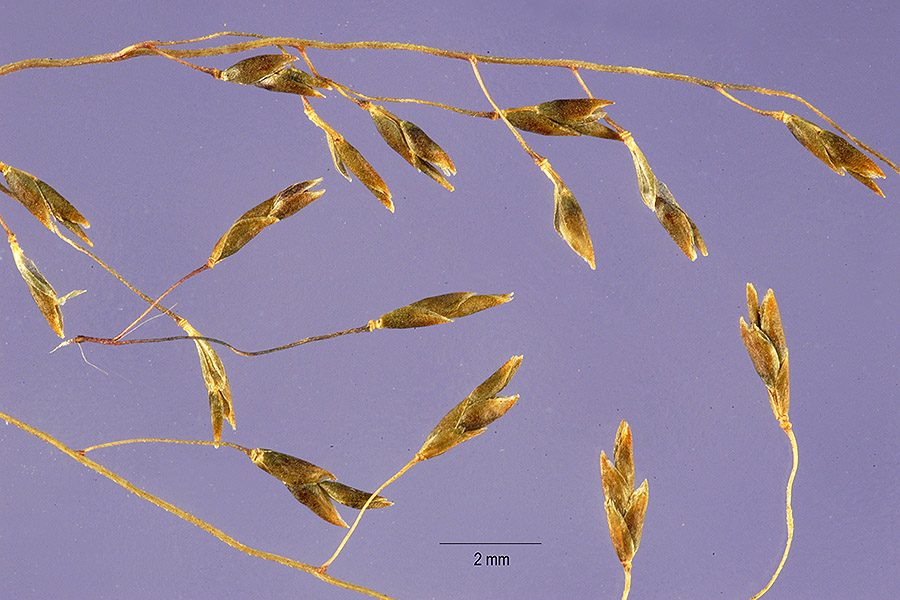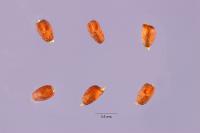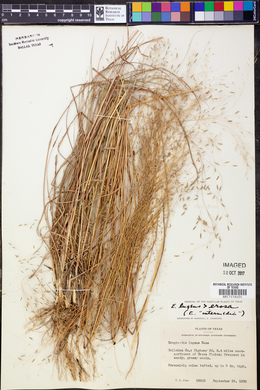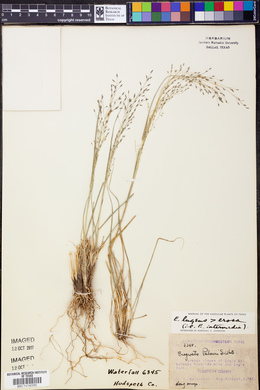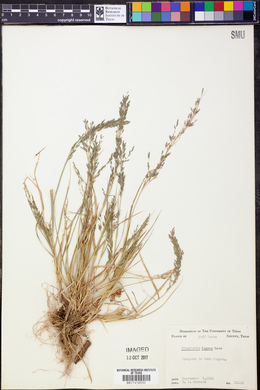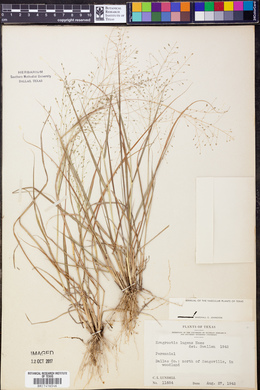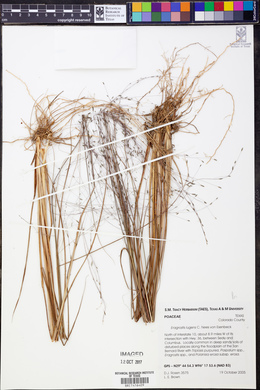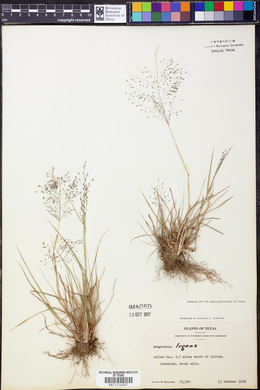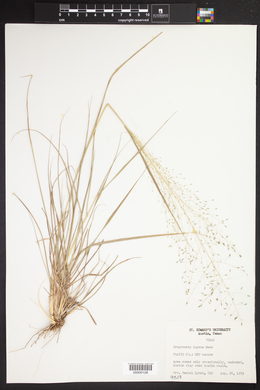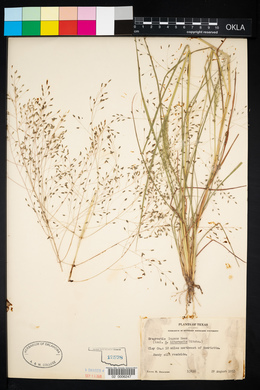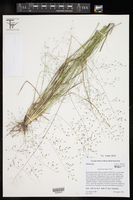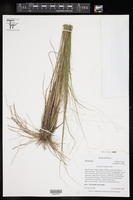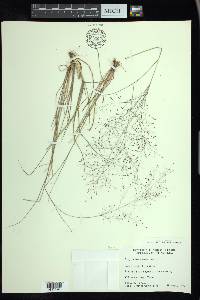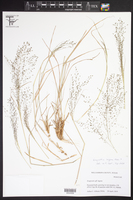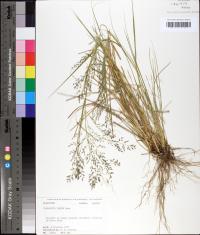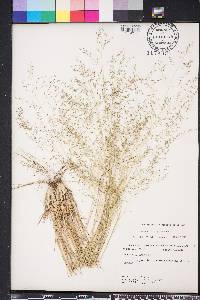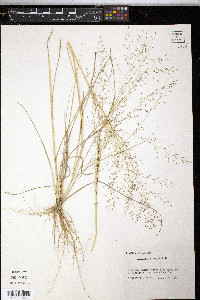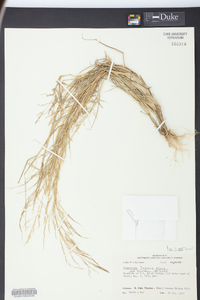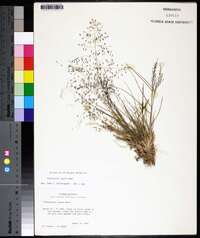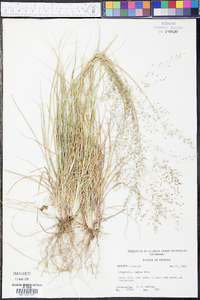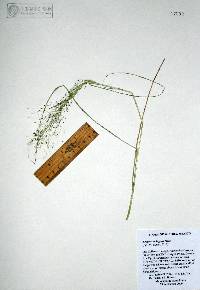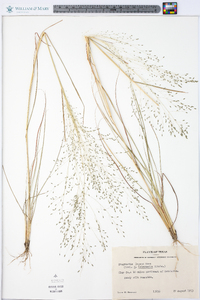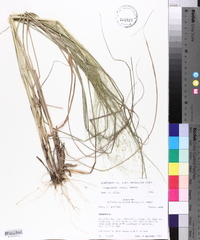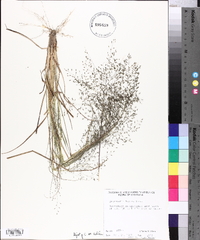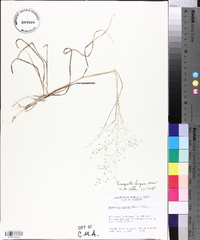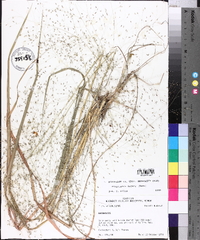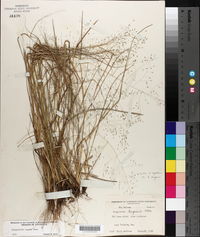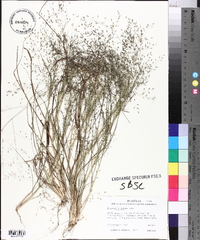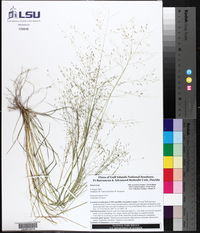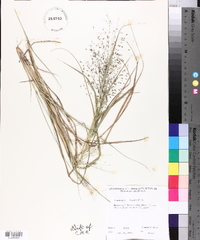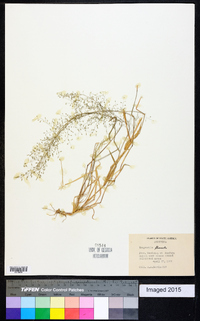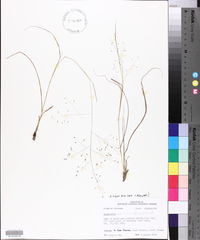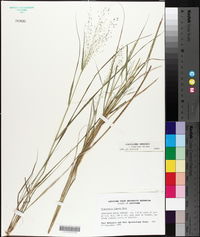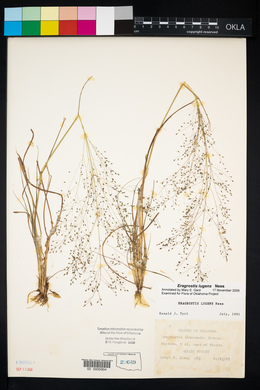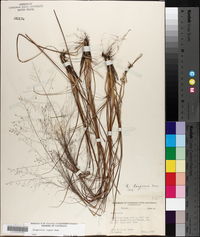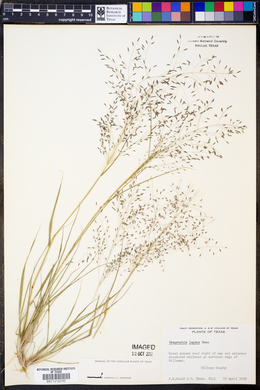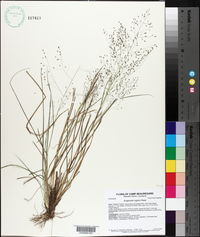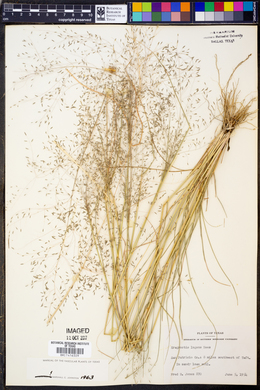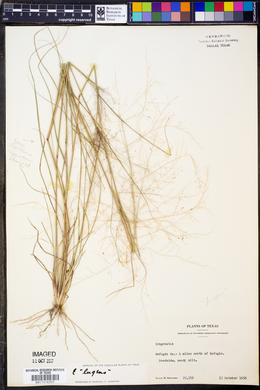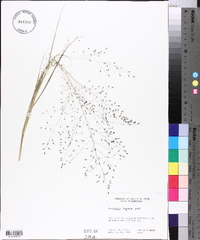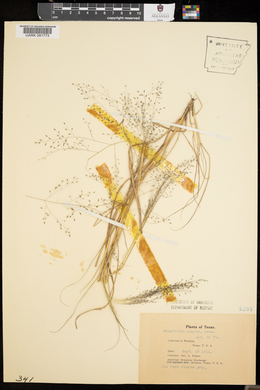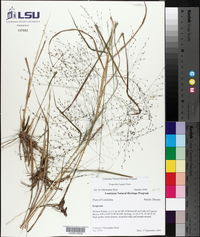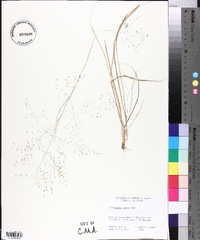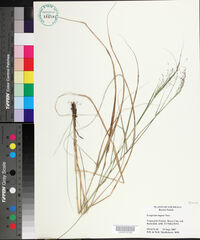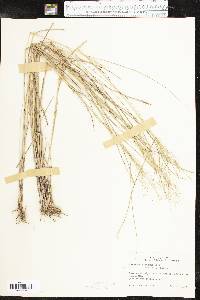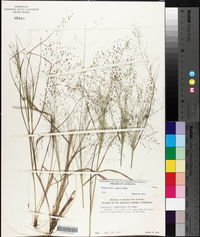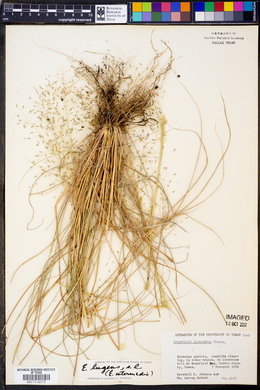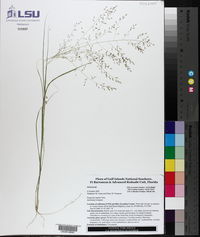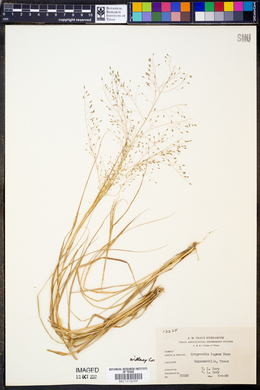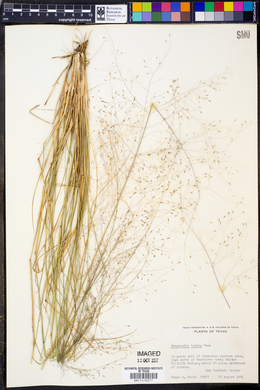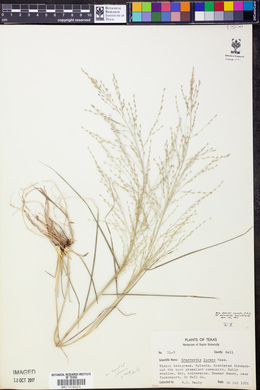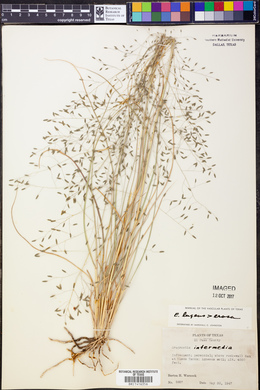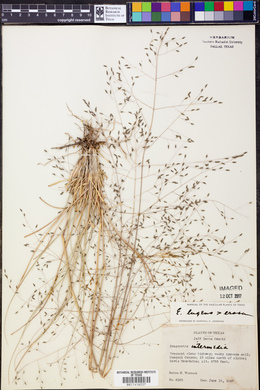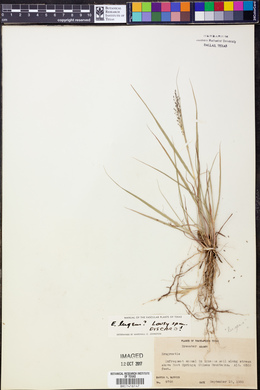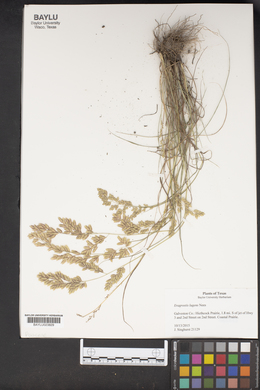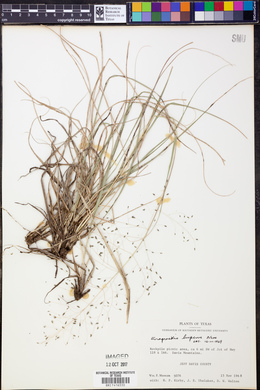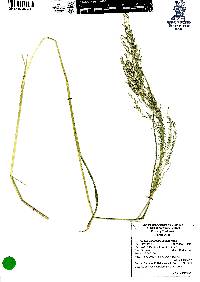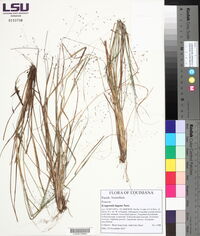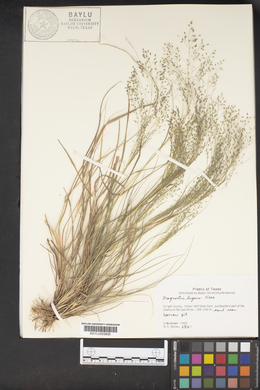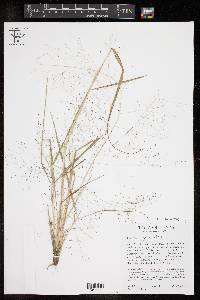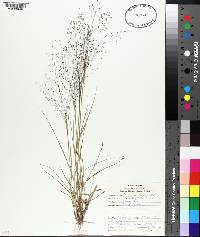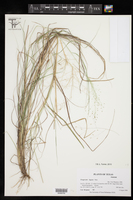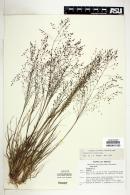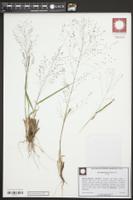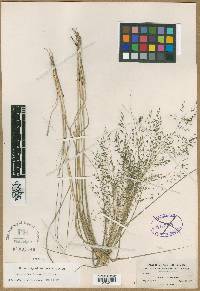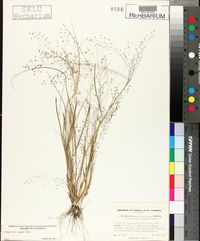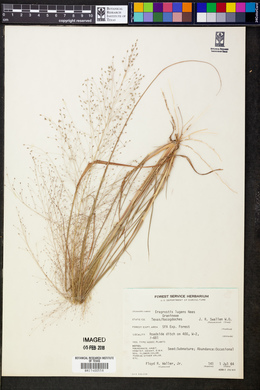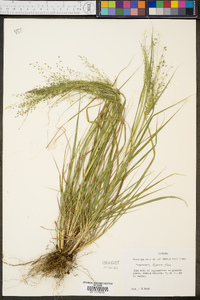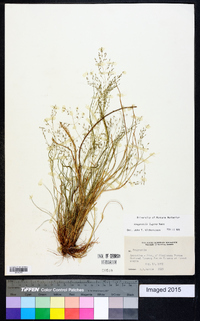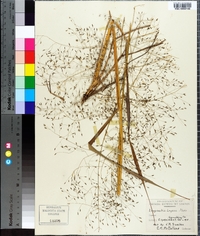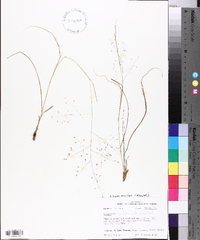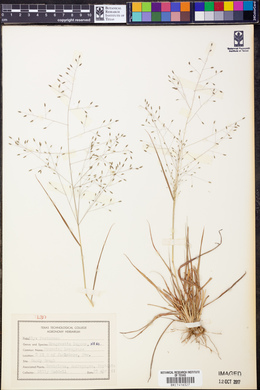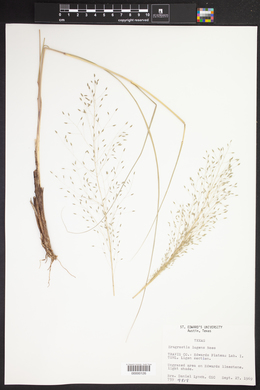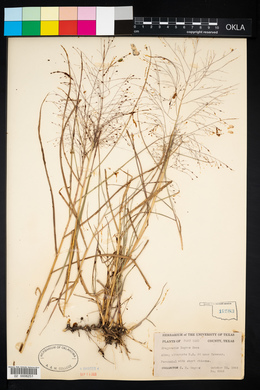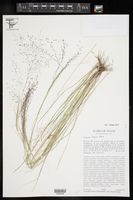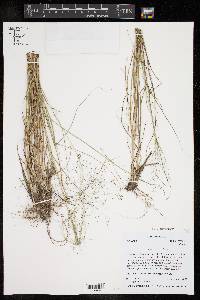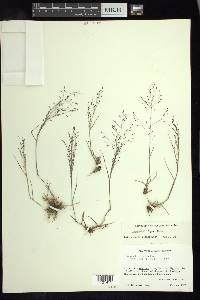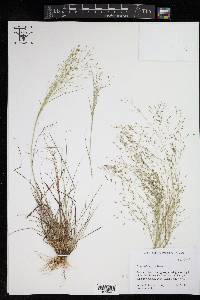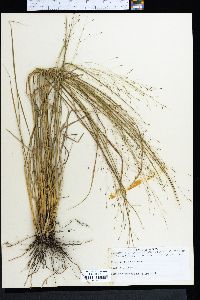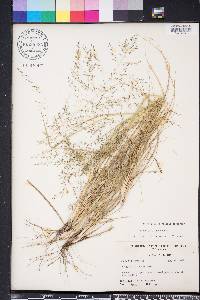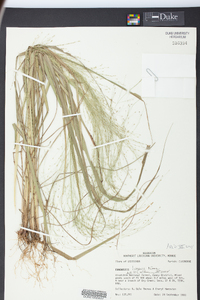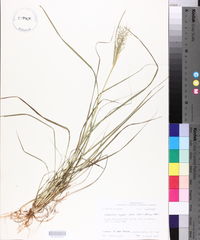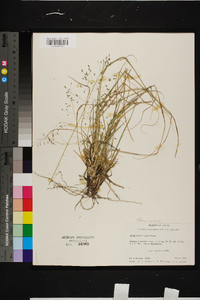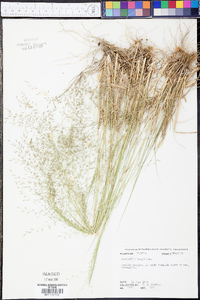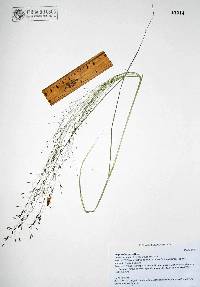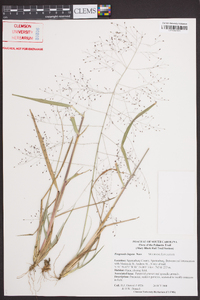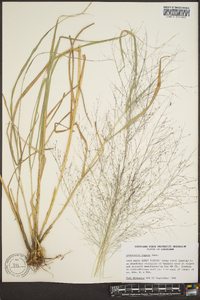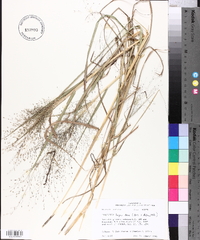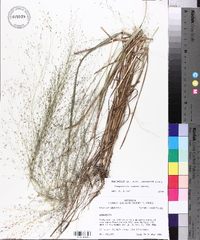
|
|
|
|
Family: Poaceae
Mourning Love Grass, more...Mourning Lovegrass
[Eragrostis flaccida Lindm., moreEragrostis lugens f. pallida Hack., Eragrostis lugens subsp. flaccida (Lindm.) Hack., Eragrostis lugens var. glabrata Döll, Eragrostis lugens var. glabrescens Döll, Eragrostis pilosa var. lugens (Nees) Griseb., Poa lugens (Nees) Kunth] |
Plants perennial; cespitose, with innovations, without rhizomes, not glandular. Culms 30-70 cm, erect, sometimes geniculate, glabrous below the nodes. Sheaths usually mostly glabrous, summits hairy, hairs 2-5 mm, never papillose-based; ligules 0.2-0.3 mm; blades (4)8-22 cm long, 1-3.5 mm wide, involute to flat, both surfaces glabrous, margins sometimes with scattered hairs, hairs to 7 mm. Panicles 16-28 cm long, 10-21 cm wide, ovate, open; primary branches 0.6-15 cm, diverging up to 100° from the rachises, naked basally; pulvini hairy; pedicels 1.4-5(7) mm, diverging, wiry, present on all spikelets. Spikelets 2-4.5(5) mm long, 0.5-1(1.3) mm wide, narrowly lanceolate, plumbeous to reddish-purple, with 2-7 florets; disarticulation acropetal, paleas persistent. Glumes broadly ovate to narrowly lanceolate, hyaline, sometimes reddish-purple; lower glumes 0.6-1 mm; upper glumes 1.1-1.4 mm, usually broader than the lower glumes; lemmas 1.2-1.8 mm, broadly ovate, mostly membranous but the distal margins hyaline, lateral veins inconspicuous, apices acute; paleas 1.1-1.7 mm, membranous to hyaline, apices obtuse; anthers 3, 0.2-0.7 mm, reddish-purple. Caryopses 0.5-0.6 mm, obovoid to somewhat prism-shaped, terete to somewhat laterally compressed, sometimes with a weak adaxial groove, finely striate, usually opaque, faintly reddish-brown to whitish. 2n = 40, 80, ca. 108. Eragrostis lugens grows on sandy dunes and along river banks, at 1-300 m. Its range extends from the southern United States to Peru and Argentina. FNA 2003, Gould 1980 Common Name: mourning lovegrass Duration: Perennial Nativity: Native Lifeform: Graminoid General: Cespitose perennials, not rhizomatous with erect, but sometimes geniculate stems 30-70 cm, glabrous below the nodes. Vegetative: Sheaths glabrous, summits hairy with hairs 2-5 mm, blades 8-22 cm long, 1-3.5 mm wide, involute to flat, glabrous on both sides, margins sometimes with scattered hairs, hairs to 7 mm; ligules less than 0.5 mm. Inflorescence: Panicles 16-28 cm long, 10-21 cm wide, ovate, open, primary branches 0.5-15 cm, diverging up to 100 degrees from the rachises, basally naked; pulvini hairy; pedicels 1.5-5 mm, diverging, wiry; spikelets 2-4.5 mm long, 0.5-1 mm wide, narrowly lanceolate, reddish-purple with 2-7 florets; disarticulates from the apex toward the base; glumes broadly ovate to narrowly lanceolate, hyaline, sometimes reddish-purple, lower glumes 0.5-1 mm, upper 1-1.5 mm, lemmas 1-2 mm, broadly ovate, mostly membranous with acute apices; caryopses obovoid to prism-shaped, terete to laterally compressed. Ecology: Found on sandy dunes and on sandy banks from sea level to 1,500 ft (457 m); flowers July-September. Notes: The distinctive habitat, along with its smaller bunching habit, glandular ring below the nodes, and reddish-purple color of the delicate spikelets all help to distinguish this species. (This diagnosis should be verified...) Ethnobotany: Unknown Etymology: Eragrostis is from Greek eros, love and agrostis, grass, while lugens is thought to come from Latin lugere, to mourn. Synonyms: None Editor: SBuckley, 2010 |

